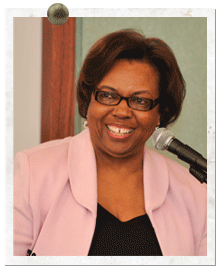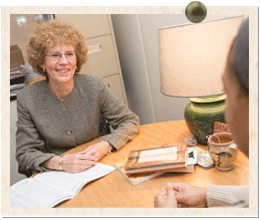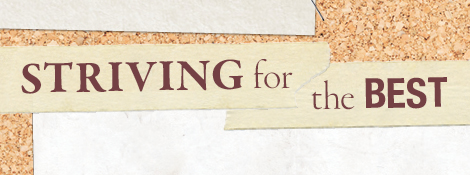UMBC is lauded for its strength in undergraduate teaching and its ability to involve undergraduates in academic research across disciplines. But how was this culture created?
Some of it was there from the beginning in the hiring of young, ambitious professors who were eager to innovate. That pioneering spirit was crucial to the creation of UMBC’s interdisciplinary studies program (first known as “Option II”) in 1969. But much of the infrastructure has been developed by staff members dedicated to student success.
UMBC’s Meyerhoff Scholars Program, created in 1988, is one of the landmark contributions to student success at the university – and has become a national and international model for creating greater diversity in STEM disciplines through concentrated cohort learning.

of UMBC’s landmark Meyerhoff Program.
Earnestine Baker, served as director and later executive director of the program before turning over the reins to her successor, the late LaMont Tolliver, who was succeeded by Keith Harmon. She recalls being in the room for the very first meeting with UMBC President Freeman A. Hrabowski, III, to create the initiative in July 1988. Tackling a problem that had bedeviled American higher education for decades might have seemed daunting, but Baker says, “I never felt that it was a risk from the first day.”
Baker says offering the students in the program challenges and support in equal measure was a key to success. “I knew having worked with [UMBC] students that we had capable students who were not working consistently at the highest levels,” she recalls.
Setting a high level of expectation was a key to the program’s success. “A student would say ‘I got a 95,’” says Baker. “But we were always asking ‘What happened to the other five?’” Yet those expectations were accompanied by a “supportive environment” that included not only formal academic advising from faculty and staff, but “social and moral support and encouragement.”
Baker says that by the third year of the Meyerhoff Program, she realized that it was going to work. “You could see the culture changing,” she says. By the fifth year, she adds, “we observed Meyerhoff students displaying the strong values and goals of the program.”
The Meyerhoff Scholars Program was aligned with UMBC’s vision of itself in that era as an “Honors University in Maryland” – and it remains a significant point of pride for the university. But perhaps the most compelling part of the Meyerhoff story is how its culture spread throughout the entire institution, spurring new projects to promote student success to a growing number of UMBC students across colleges and disciplines.

As assistant dean for academic affairs in the College of Natural and Mathematical Sciences, Kathy Sutphin ’95, political science, has had a key role in creating, implementing and/or supporting a number of projects to assess and advance student outcomes, including new teaching spaces such as the CASTLE and the Science Learning Collaboratory. She has also been active in programs that support transfer student success (the CCCSTEP, and the STEM Transfer Student Success Initiative) and help provide pathways for students into research careers (the MARC U*STAR Program at UMBC). Sutphin’s most recent project – the STEM BUILD at UMBC Initiative – was recently funded by a $18 million grant from the National Science Foundation.
“I think we identify an area that we want to explore, and then we expand it.” For example, the Chemistry Discovery Center paved the way for the CASTLE, which was fun to put together with Provost Philip Rous. And then [William LaCourse, dean of CNMS, had the idea of doing the Science Learning Collaboratory, and now these projects have evolved into the Interdisciplinary Life Sciences Building. “We learn and grow, and keep trying to do a better job.”
Sutphin came to UMBC in 1995 from a career in journalism, which she says was good preparation for grant writing. She worked with the biological sciences department (including supporting the renovation of the Biological Science Building), before moving to the newly created College of Natural and Mathematical Sciences in 2005. She identifies increasing collaboration across the university as a key to success in new projects.
“It used to be UMBC had gotten as far as it had because the faculty and staff were very talented, and lots of times they could use their talents in roles and they would excel. But there were many small shops that were often dependent on one person. And now everything has grown and evolved, so you don’t just have one person. You have groups of talented people, and then they work together to make a difference.”

Balancing innovation in student success with strong fundamentals is just as important. One staff member who ensures that this happens is assistant vice provost and assistant dean for undergraduate education Jill Randles, who manages the university’s programs to boost undergraduate student success – including an array of first-year programs that get new students off to a flying start.
Randles arrived in 1992, working as a one-stop advising and assistance shop for evening students at UMBC. “I was the adviser,” she recalls. “I was the person who did their IDs and laminated them. I did everything for them.”
Eventually Randles moved to the College of Engineering and Information Technology, where she handled undergraduate student services for the college before moving to the provost’s office and working on undergraduate success across the entire university community.
Randles treasures her role as one-on-one adviser, and has made sure to maintain that individual contacts as she addresses broader issues. She also cherishes the diversity of the student community she serves. “When the first student I ever advised was a Russian immigrant,” she recalls, “I thought this is a place where I’m going to learn something different, and I’m going to learn more about the world community and be a part of something that’s more integrated with a global perspective.”
Preserving a balance between developing new ideas and building on successes is essential to preserving UMBC’s reputation as a model for undergraduate education. “I think we are learning how to be more strategic about the things we think are good
ideas, and I think that will serve as well,” Randles observes. “But I would not want this institution to be any less dynamic. I think that is one of the things that keeps it interesting and creative. But I do think we have to be thoughtfully dynamic…. I think we attract people who have that same sense of ideas and creativity. It’s an institution full of people who like to do things.”
— Richard Byrne ’86
Tags: Winter 2016

